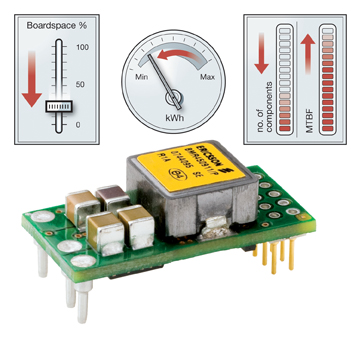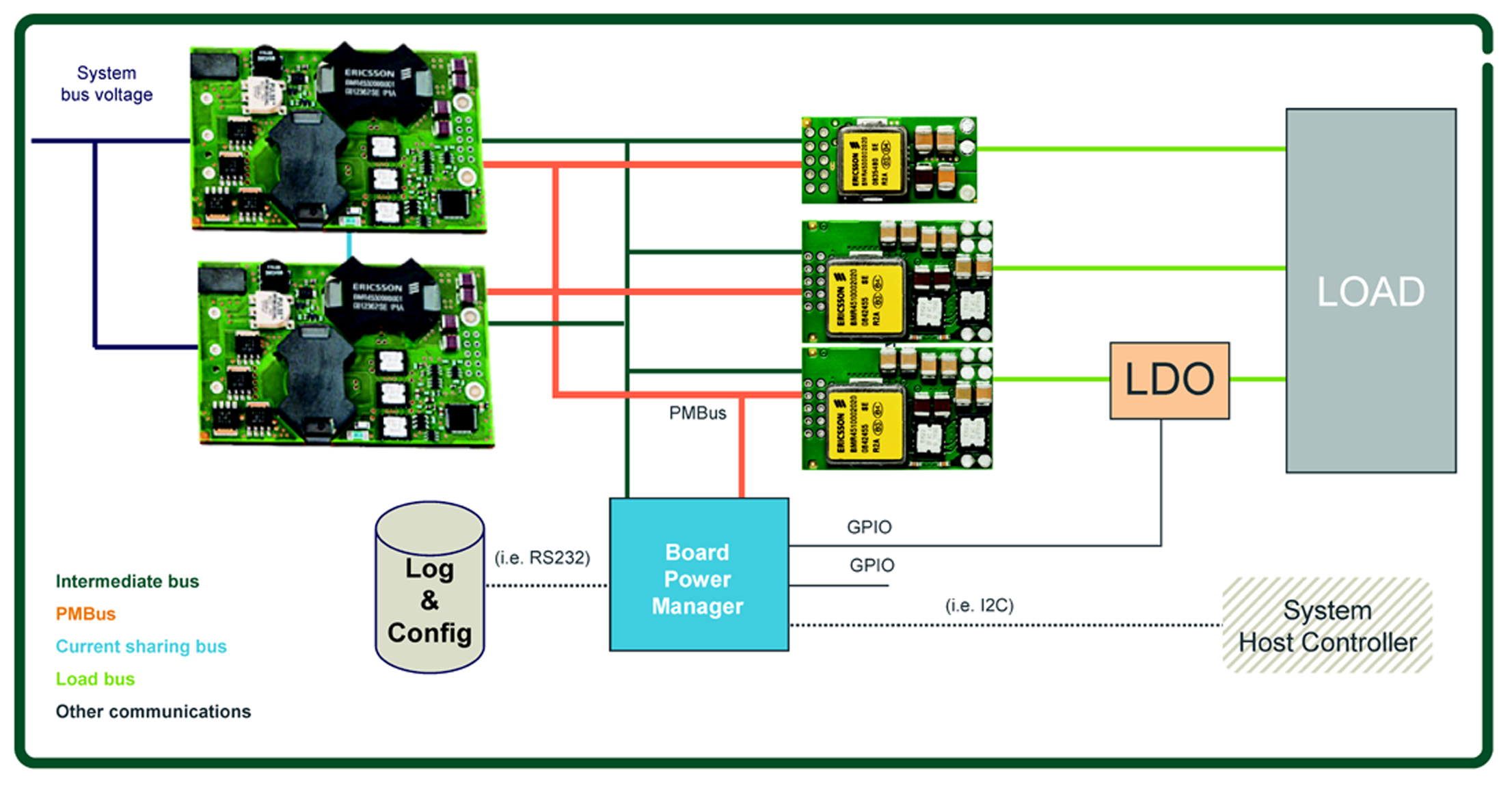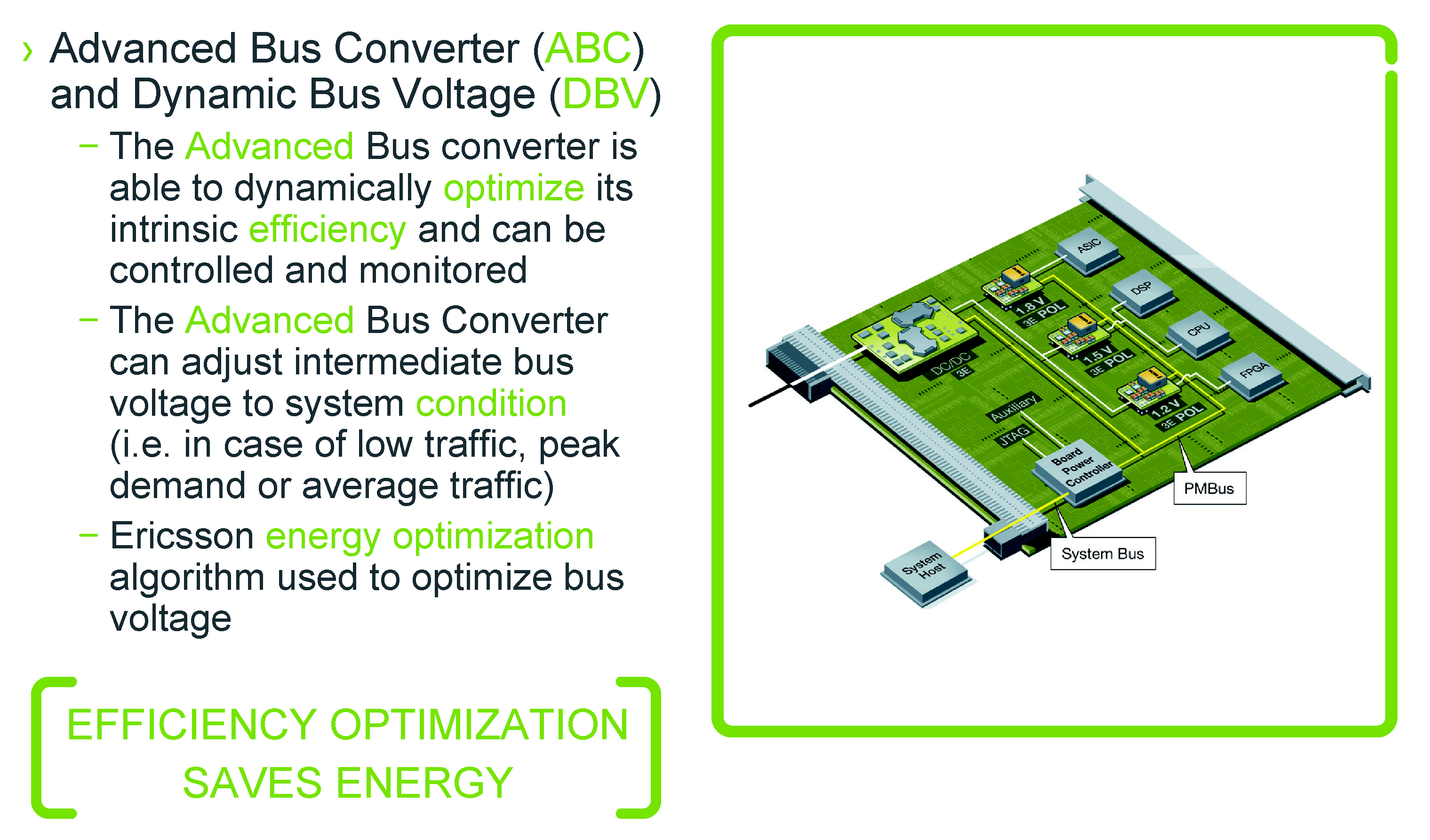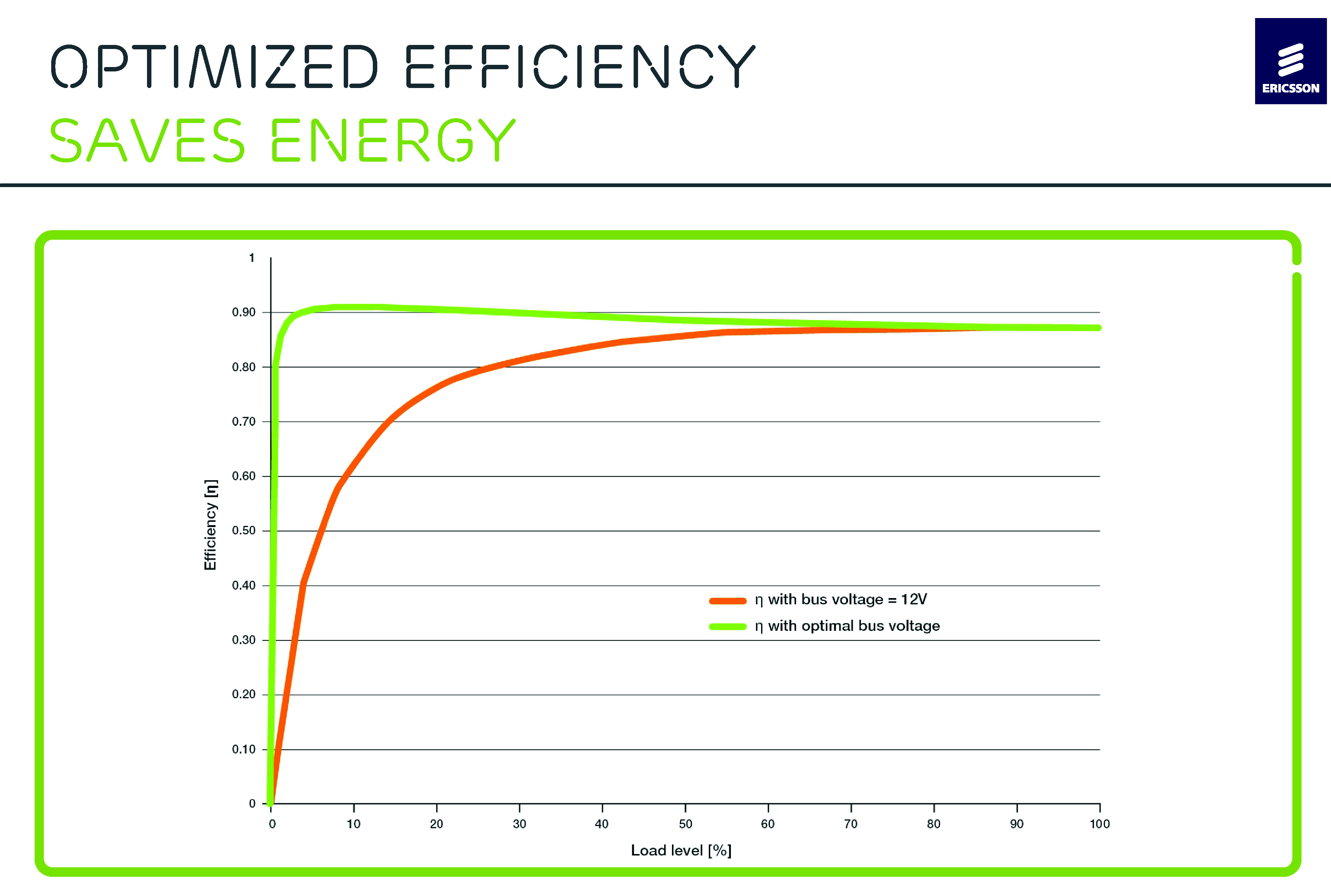Author:
Reported by Cliff Keys, Editorial Director, Editor-in-Chief, Power Systems Design
Date
12/08/2010
I met with Patrick Le Fèvre, Marketing and Communication Director of Ericsson Power Modules at the Ericsson booth. He presented me with the latest from Ericsson and told me about the huge energy saving benefits of using Dynamic Bus Voltage to optimize voltage to load condition. Digital power has much more to offer than out-performing the electrical performance and power-density requirements that previously dominated the mindset of power supply designers.
Essentially, such performance improvements are due to the ability of a digital control loop to adapt its dynamics to optimally suit line and load conditions in real time; by contrast, passive components set an analog converter's responses, which are inevitably a compromise between stability and dynamic response for the expected operating conditions. But in developing Ericsson's 3E concept that embraces enhanced performance, energy management, and end-user value, Ericsson recognized that digital power could offer benefits that apply throughout a product's lifecycle. As the digital converter's core is a mixed-signal IC it's possible to pack the supervisory measurement and control hardware together with its PMBus interface onto the same slice of silicon at negligible additional cost. This approach optimizes the electrical coupling between the converter's core and its control system, minimizes power consumption, and slashes the amount of PCB real estate that's necessary to accommodate equivalent functionality using analog-based solutions.

Essentially, such performance improvements are due to the ability of a digital control loop to adapt its dynamics to optimally suit line and load conditions in real time; by contrast, passive components set an analog converter's responses, which are inevitably a compromise between stability and dynamic response for the expected operating conditions. But in developing Ericsson's 3E concept that embraces enhanced performance, energy management, and end-user value, Ericsson recognized that digital power could offer benefits that apply throughout a product's lifecycle. As the digital converter's core is a mixed-signal IC it's possible to pack the supervisory measurement and control hardware together with its PMBus interface onto the same slice of silicon at negligible additional cost. This approach optimizes the electrical coupling between the converter's core and its control system, minimizes power consumption, and slashes the amount of PCB real estate that's necessary to accommodate equivalent functionality using analog-based solutions.

Crucially, it's now possible to configure the digital converter when it is initially made, during the development phase of the power-system designer's application, at the distributor's depot, when the equipment is manufactured, and/or when it is operating within the end-user's equipment. This unparalleled degree of flexibility extends the programmable logic model to the power conversion industry for the first time. The second generation of digital point of load converters now allows power system level efficiencies to now reach over 90%, even at just 10% load. This is achieved by dynamic management of the intermediate bus voltage to optimise system performance for the various load levels. This is important because many systems operate at low loads for the majority of the time. For example, data centres only have a full load when maximum data is bring processed, and that isn't very often. The end goal, of course, is reduction of energy and emissions. Digital POL now facilitates that. Also the quality of software tools is improving, enabling designers to more easily configure digital power systems for best performance. At present, Ericsson's tools are specific to its own products but the company is planning to launch more generic tools next year that will work with converters from other vendors too. Another possibility that monitoring a board's power consumption offers is dynamic energy conservation, where supervisory software intelligently varies the output voltage that the intermediate bus converter supplies to the point-of-load regulators.

Because virtually all power converters are least efficient at low loads, reprogramming the advanced bus converter from say 12VDC down to 9VDC saves power dissipation while the point-of-load regulators are running under light load. When more power is required, supervisory software can seamlessly ramp up the intermediate bus voltage to its optimal level for the new load conditions. Where a pair of power converters operate in a parallel current-sharing arrangement, it will save energy to turn off one if the load level falls within the capability of a single converter. This active approach to power management particularly suits systems that spend significant periods under widely different load conditions.

The utilization of dynamic bus voltage produces an impressive high efficiency performance which is virtually flat over the whole range of load conditions. This, together with the tools and support that Ericsson is now providing, gives any designer or system builder the essential tools to deliver a design that far exceed the performance of the traditional blocks available today. www.ericsson.com/powermodules